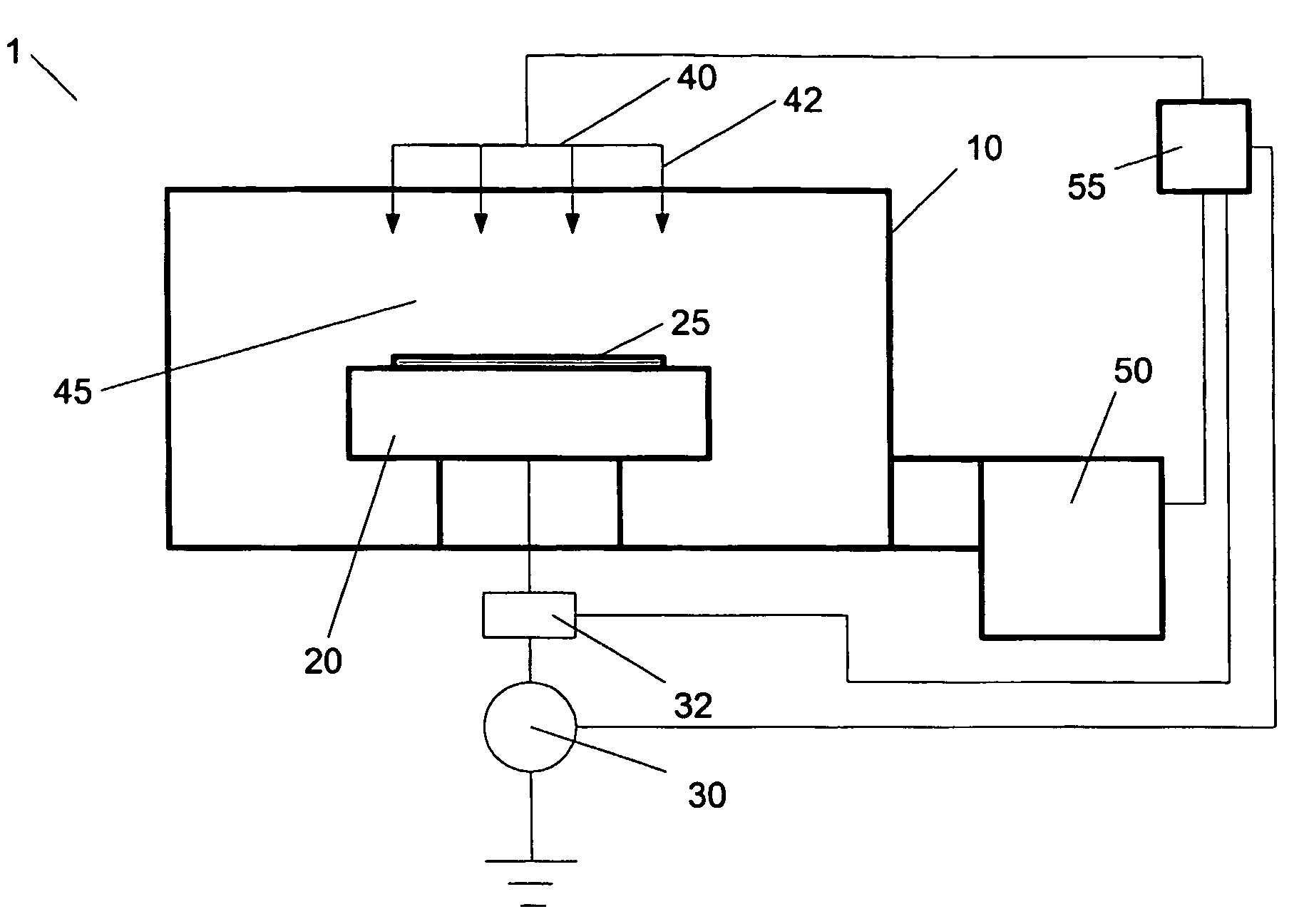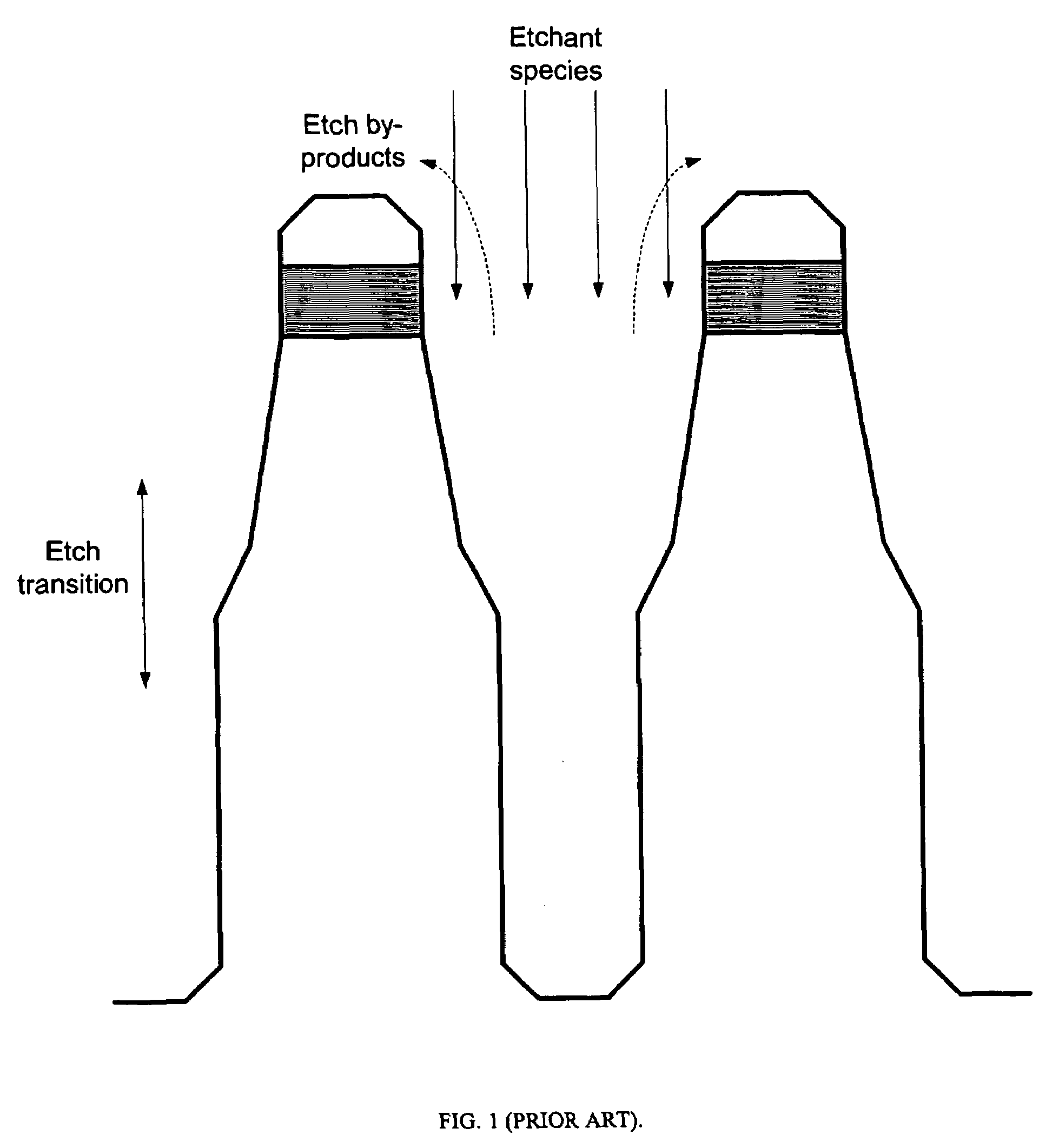Method of etching high aspect ratio features
a technology of high aspect ratio and feature, applied in the field of etch chemistries, can solve the problems of slow etching, effluent species being exhausted from the feature, and more difficult for etchant species to enter such deep etching holes, and achieve the effect of effective etching of high aspect ratio silicon features and sufficient strength
- Summary
- Abstract
- Description
- Claims
- Application Information
AI Technical Summary
Benefits of technology
Problems solved by technology
Method used
Image
Examples
first embodiment
[0026]In a first embodiment, shown in FIG. 2, the substrate holder 20 further serves as an electrode through which radio frequency (RF) power is coupled to plasma in the processing region 45. For example, the substrate holder 20 is electrically biased at a RF voltage via the transmission of RF power from an RF generator 30 through an impedance match network 32 to the substrate holder 20. The RF bias serves to heat electrons and, thereby, form and maintain plasma. In this configuration, the system operates as a reactive ion etch (RIE) reactor, wherein the chamber and upper gas injection electrode serve as ground surfaces. A typical frequency for the RF bias ranges from 1 MHz to 100 MHz and is preferably 13.56 MHz.
[0027]In an alternate embodiment, RF power is applied to the substrate holder electrode at multiple frequencies. Furthermore, the impedance match network 32 serves to maximize the transfer of RF power to plasma in processing chamber 10 by minimizing the reflected power. Matc...
second embodiment
[0031]In a second embodiment, shown in FIG. 3, the plasma processing system 1 further includes either a mechanically or electrically rotating dc magnetic field system 60, in order to potentially increase plasma density and / or improve plasma processing uniformity, in addition to those components described with reference to FIG. 2. Moreover, the computer 55 is coupled to the rotating magnetic field system 60 in order to regulate the speed of rotation and field strength.
third embodiment
[0032]In a third embodiment, shown in FIG. 4, the plasma processing system 1 of FIG. 2 further includes an upper plate electrode 70 to which RF power is coupled from an RF generator 72 through an impedance match network 74. A typical frequency for the application of RF power to the upper electrode ranges from 10 MHz to 200 MHz and is preferably 60 MHz. Additionally, a typical frequency for the application of power to the lower electrode ranges from 0.1 MHz to 30 MHz and is preferably 2 MHz. Moreover, the computer 55 is coupled to the RF generator 72 and the impedance match network 74 in order to control the application of RF power to the upper electrode 70.
PUM
| Property | Measurement | Unit |
|---|---|---|
| depths | aaaaa | aaaaa |
| depths | aaaaa | aaaaa |
| feature aspect ratio L/d | aaaaa | aaaaa |
Abstract
Description
Claims
Application Information
 Login to View More
Login to View More - R&D
- Intellectual Property
- Life Sciences
- Materials
- Tech Scout
- Unparalleled Data Quality
- Higher Quality Content
- 60% Fewer Hallucinations
Browse by: Latest US Patents, China's latest patents, Technical Efficacy Thesaurus, Application Domain, Technology Topic, Popular Technical Reports.
© 2025 PatSnap. All rights reserved.Legal|Privacy policy|Modern Slavery Act Transparency Statement|Sitemap|About US| Contact US: help@patsnap.com



